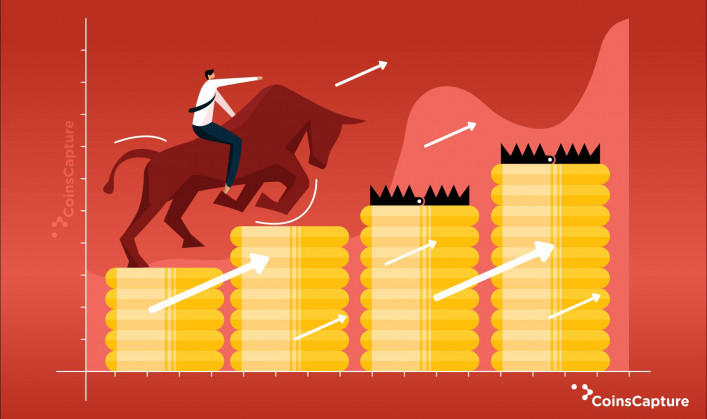7 November 2025
What is "Bull Trap" in Crypto?
A Bull Trap could be a misleading signal that occurs when a decreasing trend during a stock, index, or another security reverse after a persuasive rally and breakout a prior support level. The move “traps” traders or investors who followed the purchase signal, resulting in losses on their long positions. A Bull Trap may also sometimes be referred to as a whipsaw pattern.
Bull traps are described by a trader or investor buying an asset as it breaks through a historically high resistance level. Many breaks through the above resistance are followed by high highs, but a Bull Trap is distinguished by a bearish reversal shortly after the breakout.
Technical analysis is one of the most essential tools accessible today for traders; it entails evaluating price patterns and identifying trading signals on an asset’s price chart in order to forecast future movements. One of the most crucial signals is the breakout above a resistance level which occurs when the price chart goes above a certain line that has been consistently reached but never exceeded previously.
Also read: https://coinscapture.com/blog/what-is-crypto-rug-pull
Bullish traders frequently foresee additional price gains and go long on the asset as a result of this. While this evaluation is sometimes true, a Bull Trap happens when the signal proves to be erroneous and the market returns to its downward trend shortly after breaking through the resistance line. As a result, the bulls who bought the asset get trapped in trades based on the deceptive signal.
Bull traps can be avoided by taking additional care, such as watching for more confirmation signals of a lengthy Bull run after the initial breach above resistance. Breakouts combined with low trade volume are frequently indicators of upcoming Bull Traps. Therefore, to avoid falling victim to a Bull Trap, try to constantly evaluate other signs before initiating new positions following a price breakout, such as trading volume and future price fluctuations. Most professional market participants refer to this as “confirmations,” in which a trader observes an asset’s movement during the next period before deciding whether or not to establish new positions.
Understanding Bull Trap:
Imagine a case in which a security sells off and hits a new 52-week low before bouncing back rapidly on high volume and breaking through trendline resistance. Many traders and investors get in on the action, expecting a breakout over trendline resistance, but the security reverses at resistance and drops quickly from these levels. Unless strong risk management tactics are used new bulls become caught in long trades and suffer quick losses. The trader could have eliminated the Bull Trap simply by waiting for a breakout before buying the stock, or at the very least reduced losses by placing a tight stop-loss order immediately below the breakout level.
How To Identify A Bull Trap?
It's never easy to spot a Bull Trap, but it's also not impossible if you know what to look for. The concept is all about understanding how to spot a failed breakout and an impending reversal. Some of the most common signals that a Bull Trap pattern is forming are as follows:
1. The Market Repeatedly Tests The Resistance Level: A market will be testing resistance levels several times and failing to break out signals of weak Bullish pressure, however, this is not a 100% sure sign. It could also indicate that it is unlikely to sustain its momentum even if a breakout happens above resistance. Let's imagine the price begins to rise unabated, but it is unable to break through that resistance over the course of several trading sessions; instead, it slumps once again. This could indicate the arrival of the Bull Trap. The breakout may be valid in some circumstances, but it's usually advisable to wait and confirm the trend before taking a position.
Also read: https://coinscapture.com/blog/crypto-bull-v-s-bear-trends-know-the-right-time-to-invest
2. Long Green Candle Just Before The Market Reverses: An extremely extended green candlestick at the end of a Bull rally could indicate that additional buyers are getting on board in a bear market. They're most likely of the opinion that the breakout has been confirmed and that it is now safe to resume buying. However, it's possible that whales (large market participants and institutional investors) are purposefully inflating the price to attract naïve purchasers. When there are enough buyers in the market, the sellers begin to dump, leaving the purchasers to cover the losses.
3. The Chart Forms A Range: When the price fluctuates inside a predetermined support and resistance level, it is said to be trading in a range. This indicates that both buyers and sellers are competing for market domination, but neither side is gaining enough traction to emerge victoriously. Buyers are attempting to drive the price higher while protecting the support level. Sellers, on the other side, are attempting to push the price down by actively defending the resistance level. Hence, one side eventually wins.
How To Recognize Bull Trap?
If you’re not sure how to spot a Bull Trap pattern, you can always check the relative strength index (RSI) to see if the stock is now overbought or oversold. If the asset is regarded as overbought, a bearish reversal is likely to occur soon following the breakout. If oversold, the prevailing Bullish trend following the breakout may continue, but it’s preferable to wait for confirmation of the trend before positioning.
How To Escape A Bull Trap?
Setting a stop-loss on your position as soon as you open it is the most remarkable approach to avoid a Bull Trap. There are a few kinds of stop-losses to choose from, like standard, trailing, or guaranteed. When attempting to avoid a Bull Trap, a trailing stop will probably help you by trailing behind the current market value by a certain number of points and immediately closing your position if the market value falls by that specified number of points. This will allow you to lock in as much profit as possible while also cutting losses into a Bull Trap.
How To Trade A Bull Trap?
Panicking will simply distort your judgment and lead you to make decisions based on feelings. Accept your losses as they are and go forward. You’ll be able to approach your next trade with a clear mind. When a bear trap is detected, you can trade a Bull Trap by establishing a short position. In addition, financial derivatives, such as spread bets and CFDs, can be used to short the market. These allow you to position on an asset without actually owning it, making them ideal for shorting.
Also read: https://coinscapture.com/blog/3-ways-to-identify-and-avoid-manipulation-in-crypto-market
Risk Of Trading A Bull Trap
However, If you’re going to trade a Bull Trap you have to be willing to take risks. For one thing, the market can always reverse its path. For example, the Bull Trap could be brief, and the Bulls could come back even stronger in the following trading sessions. This indicates you could have gained more money if you hadn’t traded the trap in the first place. Furthermore, trend confirmation signals are never completely reliable. As a result, every deal will always involve some level of speculation; Every bet entails some level of risk.
Disclaimer: The author’s thoughts and comments are solely for educational reasons and informative purposes only. They do not represent financial, investment, or other advice.






